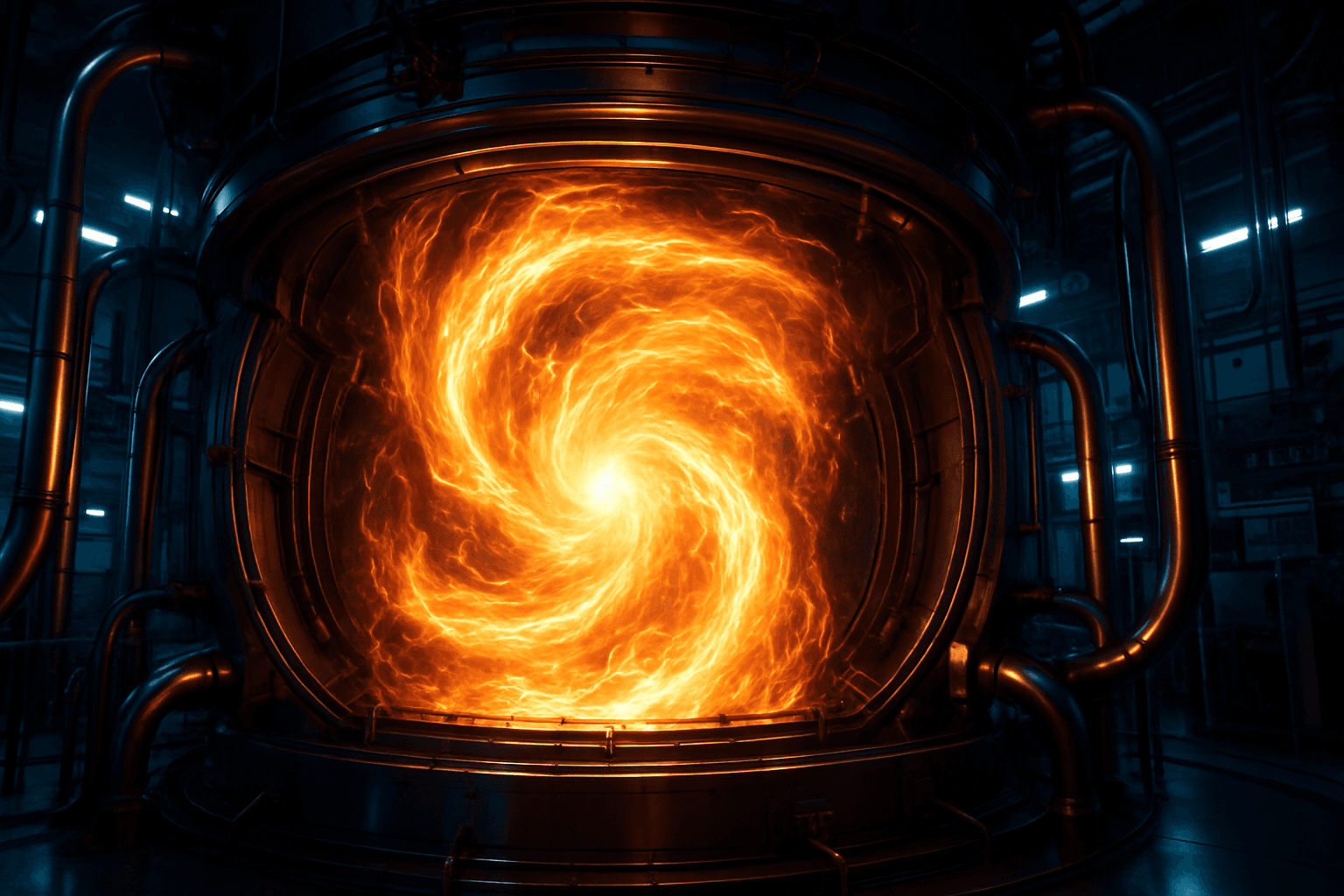The quest for clean, limitless energy has taken a significant leap forward, with a US-based team achieving a groundbreaking breakthrough in nuclear fusion. This achievement addresses a challenge that has stumped scientists for nearly 70 years, potentially paving the way for commercially viable fusion reactors.
The Fusion Dream: A Clean Energy Holy Grail
Nuclear fusion, the process that powers the sun and stars, has long been hailed as the “holy grail” of energy sources. It promises a future of abundant, clean, and safe power, offering a potential solution to the world’s growing energy demands and the urgent need to combat climate change. Unlike fossil fuels, fusion produces no greenhouse gases. And unlike nuclear fission, it doesn’t create long-lived radioactive waste.
The Greenwald Limit: A Long-Standing Obstacle
One of the major hurdles in achieving practical fusion energy has been the “Greenwald limit”. This limit describes the maximum plasma density that can be sustained in a tokamak reactor, a donut-shaped device that uses magnetic fields to confine the superheated plasma needed for fusion. Exceeding this limit leads to instabilities that disrupt the plasma, halting the fusion reaction.
For decades, scientists have struggled to overcome this barrier, which has been a significant bottleneck in the development of efficient fusion reactors. Many tokamak designs require plasma densities higher than the Greenwald limit to achieve efficient fusion.
The Breakthrough: Surpassing the Limit
A team at General Atomics, a research facility operated for the US Department of Energy, has now successfully surpassed the Greenwald limit. Their findings, published in the journal Nature, mark a significant milestone in advancing fusion technology toward commercial viability.
The team managed to produce stable plasma with a density 20% higher than the Greenwald limit. Furthermore, they maintained a plasma confinement quality that is 50% better than the standard high-confinement mode typically used in tokamak reactors. This is a major step forward, as it demonstrates the possibility of achieving the conditions required for efficient fusion.
How They Did It: Advanced Control Techniques
The researchers achieved this breakthrough by employing advanced control techniques to carefully manage the plasma. By precisely tuning the magnetic fields and injecting small amounts of impurities into the plasma, they were able to stabilize the plasma and prevent disruptions, even at densities exceeding the Greenwald limit.
Implications for the Future of Fusion
This breakthrough has significant implications for the future of fusion energy. By breaking through the Greenwald limit and demonstrating improved plasma confinement, the team has unlocked new opportunities for more efficient fusion energy production. This development could pave the way for the creation of fusion reactors that are capable of operating under conditions necessary for sustained and efficient power generation.
Other Fusion Energy Advancements
Besides the work done by General Atomics, there have been other significant advancements in fusion energy recently:
- National Ignition Facility (NIF): In December 2022, the NIF at Lawrence Livermore National Laboratory achieved fusion ignition, producing more energy from the fusion reaction than the laser energy used to initiate it. This was the first time this had ever been achieved in a laboratory.
- ITER: The International Thermonuclear Experimental Reactor (ITER) in France, a large-scale international fusion project, is nearing completion. ITER aims to demonstrate the feasibility of fusion as a large-scale, carbon-free source of energy. ITER hopes to achieve first plasma by 2025.
- SPARC: MIT’s SPARC project, in collaboration with Commonwealth Fusion Systems, is on track to demonstrate net energy gain by 2025.
- ** токамак (EAST):** Research reactors around the world, such as the Experimental Advanced Superconducting Tokamak (EAST), have produced record-breaking results in recent years, such as increasing the energy gain from fusion or sustaining a stable plasma for a longer time.
- 22-Minute Plasma Sustained: A team operating a tokamak in southern France recently managed to hold plasma for 22 minutes (1,337 seconds), surpassing a previous record set in China.
Government and Private Sector Investments
Both governments and private companies are investing heavily in fusion energy. As of 2025, commercial fusion companies have raised over US$9 billion in investments. The U.S. Department of Energy (DOE) is also funding numerous fusion research projects through programs like the Fusion Innovative Research Engine (FIRE) Collaboratives and the Milestone-Based Fusion Development Program.
Challenges Remaining
Despite these significant advancements, there are still challenges to overcome before fusion energy becomes a commercial reality. These include:
- Sustaining the reaction: Fusion reactions need to be sustained for long periods of time to produce a continuous supply of energy.
- Materials science: Developing materials that can withstand the extreme heat and radiation inside a fusion reactor is crucial.
- Cost reduction: The cost of building and operating fusion reactors needs to be reduced to make fusion energy economically competitive.
Fusion: Not Just Clean Energy
Fusion research is also leading to advancements in other fields, such as material sciences, medical science, pulsed power systems, and AI design. Many companies are spinning off product groups to monetize the core research of their fusion programs.
The Future is Bright for Fusion
The recent breakthrough by the General Atomics team, along with other advancements in fusion research, has injected new optimism into the field. With sustained investment and continued progress, fusion energy could become a commercial reality in the coming decades, providing a clean, abundant, and sustainable energy source for future generations. While most experts agree that fusion energy could become commercially viable by the 2040s, the increasing pace of progress and investment suggests that fusion energy is moving closer to becoming a commercial reality.

